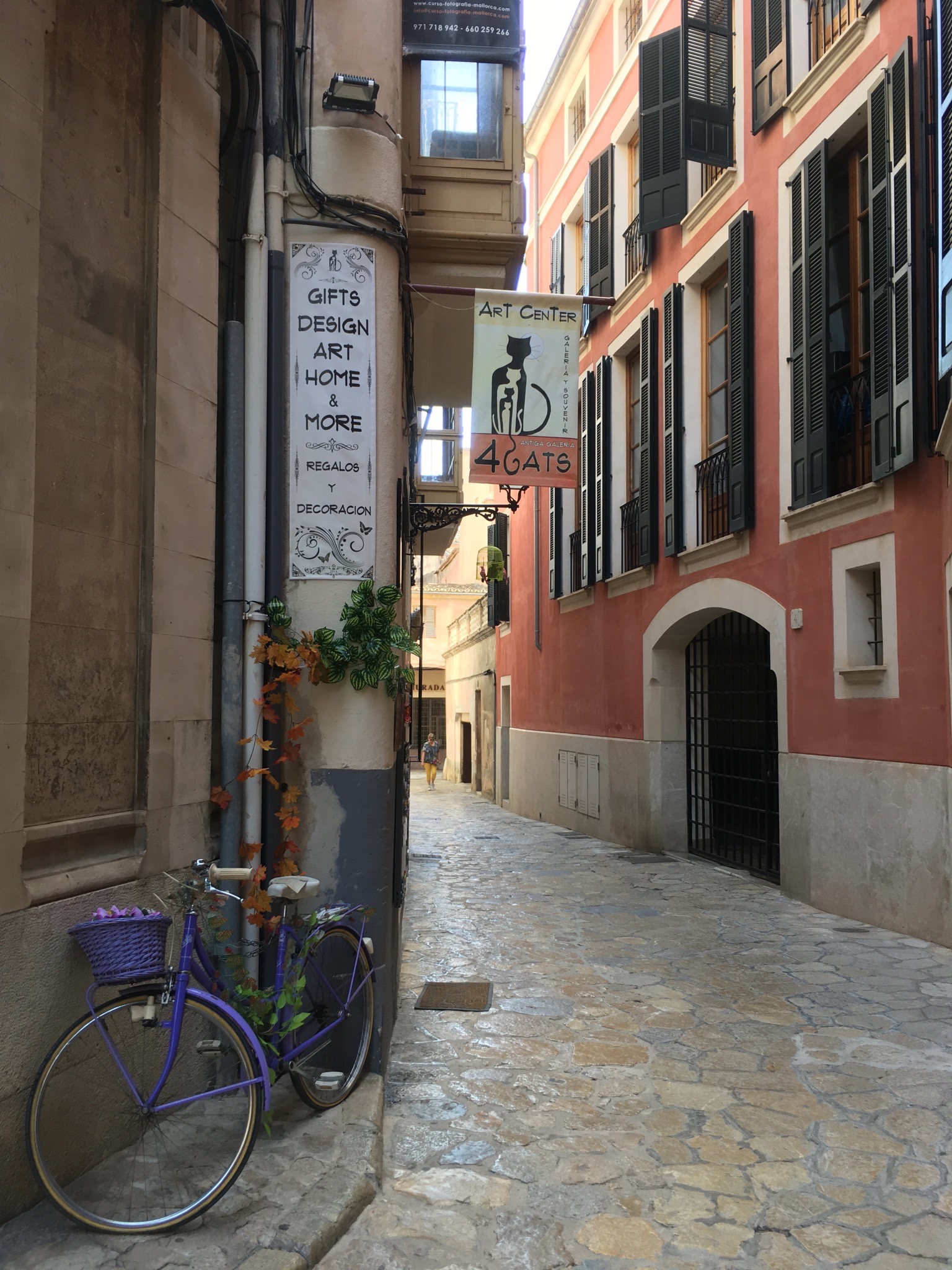The Embodied Aesthetics Through Yoga Research Project
/A Case for a Yoga as a Neuroaesthetics Topic and Tool by Jonna Kwiatkowski
Jonna Kwiatkowski, PhD, and Associate Professor of Psychology and Art Therapy at Mars Hill University has researched and taught about the psychology of creativity and aesthetics for 22 years. She recently returned from a sabbatical on the island of Mallorca where she focused her research and developed The Embodied Aesthetics Through Yoga Research Project. Here are Jonna's thoughts on the project and how you can participate.
“There is just this for consolation: an hour here or there, when our lives seem, against all odds and expectations, to burst open and give us everything we've ever imagined, though everyone but children (and perhaps even they) knows these hours will inevitably be followed by others, far darker and more difficult. Still, we cherish the city, the morning, we hope, more than anything, for more. Heaven only knows why we love it so.”
– Michael Cunningham, “The Hours”
In “The Hours," author Michael Cunningham famously assigns Clarissa Vaughn the lament that one must endure a mundane existence between brief moments of elation, creation, and joy. The work of everyday life is to make it through with little inspiration in hope of a future day or even moment where sparks fly and life dances. While it is possible to find a melancholy beauty in this perspective, it might also lead to despair. What to do the morning after a beautiful experience? Settle into the knowledge that it will likely be some time before the mind and body gets another opportunity to whirl in such perfect synchrony? Start searching for that next thing that might make the world hum? Bury yourself in social media feeds…
It is this version of elusive beautiful experiences that is most often studied in empirical aesthetics research. Classically, researchers have presented people with many variations of a (usually) visual object such as a strange squiggly figure that varies in symmetry, color, angularity, etc. (e.g., Berlyne, 1970) and then evaluated which combinations lead to the highest preference ratings. With improvements in neuroscience techniques, there has been a resurgence of interest in psychological aesthetics research. In this newer neuroscience-driven approach, similar stimuli are often used, but the goal is to evaluate patterns of brain response when preference is high and low, as well as how brain responses change with different types of stimuli (e.g., Chatterjee & Vartanian, 2016).
Notice that in the classic and updated neuroscience research paradigms, some external stimulus provokes the aesthetic response. Most often, researchers have used visual art-inspired stimuli, but there is also plenty of published work about the aesthetics of other arts forms - music (e.g., Brattico, Brattico, & Jacobsen, 2009), dance (e.g., Christensen & Calvo-Merino, 2013), fiction (Djikic & Oatley, 2014) – but note again that the aesthetic experiences are caused by something happening outside the person. There is a strong assumption in much of the empirical aesthetics research that aesthetic experiences require being exposed to something beautiful. Like Clarissa, aesthetics researchers (including me) have had us seeking that exquisite something that bursts open our lives for a fleeting moment.
But experiencing beauty isn't merely witnessing something ephemeral. There is another area of psychological research that offers a different perspective on these experiences: yoga, meditation and mindfulness-based research. Within these research areas, there is also an interest in understanding which parts of the brain are activated through these practices, and how the worldview changes along with it. Most of the work has been conducted with meditators (e.g., Fox, et al., 2016) with some focus on yoga-based practices (e.g., Cahn & Polich, 2013) in order to understand the cognitive and neurophysiological responses to a largely internal process. Any changes that are observed are assumed to arise from an inward focus and quiet or silent internally-oriented cognitive processes. In other words, the most common stimulus for meditation or yoga-based research is inside the person, whereas the most common stimulus for aesthetic research is outside the person.
This matters for my research because I have found that despite the stimulus, the cognitive and neurophysiological response to outward aesthetic objects and internal yoga-based or meditative practices is very much the same in the research literature. There is almost complete overlap between the descriptions of a person having an aesthetic experience and a person having a meditative experience in published academic research. These similarities led me to the reflections of Clarissa, but from a researcher and yogi's perspective. I asked myself, "Do we need to wait for some external object to have a beautiful experience, or might we be able to learn internal contemplative practices such as yoga and meditation to cultivate them within ourselves? Might we have the potential to learn how to live more of our time feeling as if we were seeing a beautiful painting, listening to joyful music, or dancing in synchrony with the world around us?"
I have created this website and am doing this research to explore the possibility that yoga-based practices can facilitate aesthetic-like experiences both during and after practicing yoga. In future posts, I will add more detail about how aesthetics and yoga-based practices share common philosophies, theories, and empirically-driven research results. If you are interested, sign up for our mailing list to receive updates and consider participating in the Spring 2018 research project.
Thanks for your interest in The Embodied Aesthetics Through Yoga research project!
www.embodiedaestheticsyoga.com



